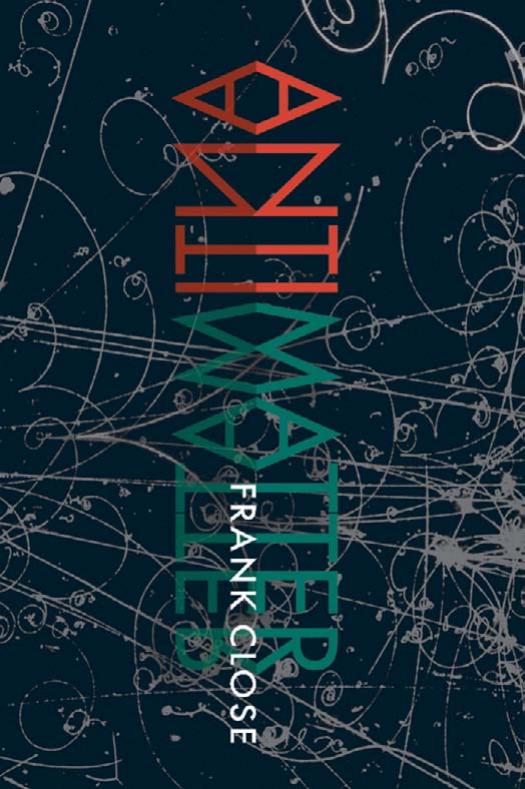Antimatter by Frank Close

Author:Frank Close
Language: eng
Format: epub, pdf
Publisher: OUP Oxford
Published: 2009-06-14T16:00:00+00:00
Storing Antiprotons
Touschek had tamed positrons; in Russia Gersh Budker decided to see if he could do the same for protons and, later, antiprotons. Protons and antiprotons are nearly two thousand times more massive than electrons and positrons, and the energy required to make them is correspondingly greater also.
Making antiprotons is not a problem however, so long as you have enough energy available, and this was first done in 1955 as we saw on page 71. But, controlling them once you have made them is a big challenge. First fire a beam of protons into a block of metal. About once in every 250,000 collisions, kinetic energy is converted into mass in the form of a new antiproton–proton pair. These antiprotons are travelling close to the speed of light, rushing all over the place. Magnetic fields that had been able to focus positrons into stable orbits were unable to control the wild antiprotons, which would fly sideways out of their arcs, smash into the walls of the ring and be annihilated.
Some way was needed to tame them; metaphorically they had to be brought into step or, in the jargon, ‘cooled’. Budker’s idea was to pass the antiprotons through clouds of cold electrons. Although electrons are matter and antiprotons are antimatter, they are no danger to one another: electrons are destroyed by their antiparticle, the positron, while the antiproton is at risk only from protons or neutrons. The antiprotons’ erratic wobbles were gradually smoothed out as, in effect, their energy, or ‘heat’, was transferred to the electrons. By 1974 Budker had succeeded in making and cooling antiprotons, but not in sufficient numbers to make an intense beam.
In 1979 the Nobel committee awarded their physics prize to Sheldon Glashow, Abdus Salam, and Steven Weinberg for their theory that united electromagnetic and weak forces into a single ‘electroweak’ force, even though its most dramatic prediction, namely the existence of W and Z particles, had not been proved. The plan at CERN, driven by the experimental genius and energy of Carlo Rubbia, was to produce them, and to do so would require a whole new technique—high-energy annihilations between protons and antiprotons. Theorists had calculated that in such circumstances it would be possible to produce not just electromagnetic radiation, light, but also the quantum bundles known as W and Z, which are the agents that transmit the weak forces of radioactivity.
Rubbia planned to do this by rotating beams of protons and antiprotons in opposite directions around CERN’s ‘Super Proton Sychrotron’, known as the SPS. That was the end game. To start it all off, beams of protons circulated in CERN’s older and more modest, less ‘super’, machine known as the PS. The next step was to extract the protons, speed them up to make higher energy beams, and then inject them into the SPS. That was the easy part. The bigger challenge was to tame antiprotons and get them successfully into the SPS.
The conundrum was solved by the Dutch engineer, Simon van der Meer, which led him to a share of the Nobel Prize in 1984.
Download
This site does not store any files on its server. We only index and link to content provided by other sites. Please contact the content providers to delete copyright contents if any and email us, we'll remove relevant links or contents immediately.
| Atomic & Nuclear Physics | Particle Physics |
The Complete Stick Figure Physics Tutorials by Allen Sarah(7339)
Secrets of Antigravity Propulsion: Tesla, UFOs, and Classified Aerospace Technology by Ph.D. Paul A. Laviolette(5336)
Thing Explainer by Randall Munroe(3911)
The River of Consciousness by Oliver Sacks(3574)
The Order of Time by Carlo Rovelli(3164)
How To by Randall Munroe(3077)
A Brief History of Time by Stephen Hawking(2994)
I Live in the Future & Here's How It Works by Nick Bilton(2963)
What If?: Serious Scientific Answers to Absurd Hypothetical Questions by Randall Munroe(2670)
The Great Unknown by Marcus du Sautoy(2664)
Midnight in Chernobyl by Adam Higginbotham(2519)
Blockchain: Ultimate Step By Step Guide To Understanding Blockchain Technology, Bitcoin Creation, and the future of Money (Novice to Expert) by Keizer Söze(2467)
Networks: An Introduction by Newman Mark(2383)
The Meaning of it All by Richard Feynman(2320)
Easy Electronics by Charles Platt(2309)
The Tao of Physics by Fritjof Capra(2247)
Midnight in Chernobyl: The Untold Story of the World's Greatest Nuclear Disaster by Adam Higginbotham(2200)
When by Daniel H Pink(2098)
Introducing Relativity by Bruce Bassett(2097)
